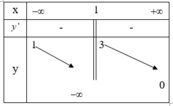Read the following passage and mark the letter A, B, C or D on your answer sheet to indicate the correct answer to each question.
Body postures and movements are frequently indicators of self-confidence, energy, fatigue, or status. Cognitively, gestures operate to clarify, contradict, or replace verbal messages. Gestures also serve an important function with regard to regulating the flow of conversation. For example, if a student is talking about something in front of the class, single nods of the head from the teacher will likely cause that student to continue and perhaps more elaborate. Postures as well as gestures are used to indicate attitudes, status, affective moods, approval, deception, warmth, arid other variables related to conversation interaction.
The saying "A picture is worth a thousand words" well describes the meaning of facial expressions. Facial appearance - including wrinkles, muscle tone, skin coloration, and eye color-offers enduring cues that reve1il information about age, sex, race, ethnic origin, and status.
A less permanent second set of facial cues-including length of hair, hairstyle, cleanliness, and facial hair-relate to an individual's idea of beauty. A third group of facial markers are momentary expressions that signal that cause changes in the forehead, eyebrows, eyelids, cheeks, nose, lips, and chin, such as raising the eyebrows, wrinkling the brow, curling the lip.
Some facial expressions are readily visible, while others are fleeting. Both types can positively or negatively reinforce the spoken words and convey cues concerning emotions and attitudes.
Facial expressions ________.
A. cannot convey emotions
B. cannot reinforce spoken words
C. can only express negative attitudes
D. can be either visible or fleeting





